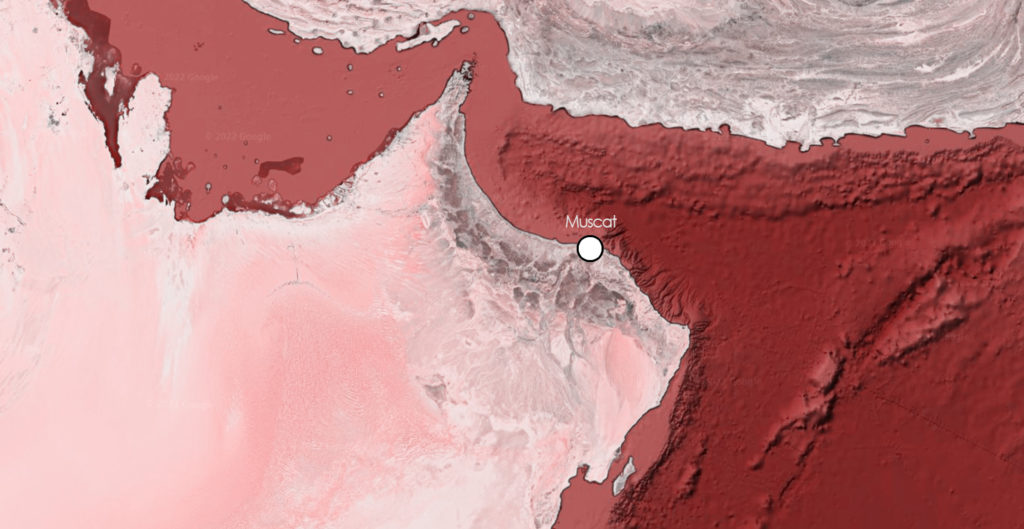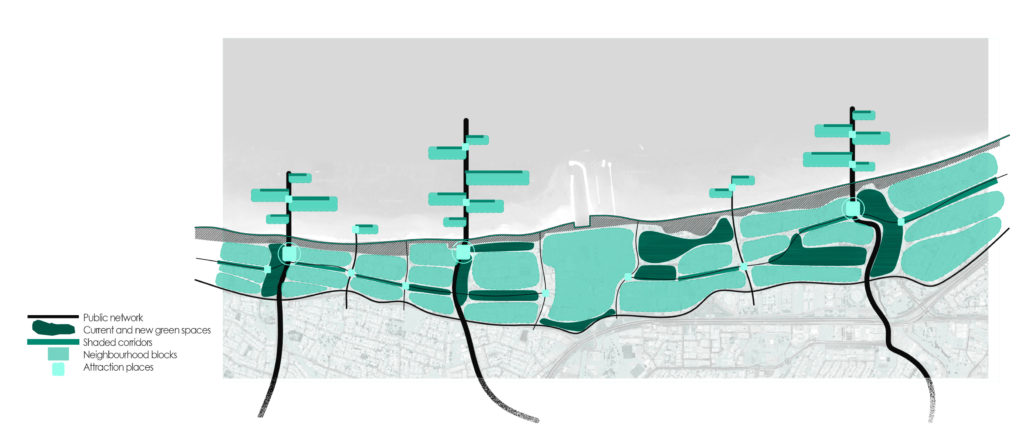Muscat, Oman – one of Middle East’s oldest port cities, is known for its rich cultural heritage and diverse natural landscape. The urban fabric is concentrated along the coastline and dissipates into the rural areas. The disparity in the concentration of population and the increased use of natural resources to support the growing economy has led to a rise in an already high average temperature of the city.

Although Muscat has preserved the traditional character of the city when compared to its quasi utopian Middle eastern counterparts, the gradual evolution of the city’s urban density over the years has still resulted in the phenomenon of urban heat island effect. How do we transform this hot city into a host city?

Concept
The aim was to gradually shift the process of urbanization from a myopic perspective and make way for a more self-reliant and sustainable approach.

The hot spots
Identifying the highest energy consumption zones in the city narrowed down the zones that required design intervention. The rising temperature of the city showed a steady increase from 2009 – 2022 and peaked at a staggering 50°C, whereas the average thermal comfort for a person is 25°C

Scheme of connectivity
The disconnected public network, lack of green pockets and the resultant extreme weather has cut down pedestrian mobility and community engagement in the city. Through seamless connection of spaces, the idea was to supply renewable energy to the city through green corridors, to tackle the rising sea level by introducing the idea of floating cities and also take it a step further and introduce self-sufficient habitat modules.
Synergetic interaction between land and sea
The first phase of the concept identifies the intermittent network and introduces shaded green corridors to ensure interconnectivity. These green corridors are the main arteries that branch out to the sea and also carry the green energy produced in the floating city into the land. The floating city constitutes of a cluster of self-reliant modules with infinite potential for expansion.

The self-reliant module
The design draws a parallel between the city and module in the context of the urban form of Muscat’s coastline, activity, and fragmentation.
The mechanism
Each module generates its own energy and food (aquaponics) and supplies the surplus into the city, thus creating a reciprocal interaction between the floating city and the land.


